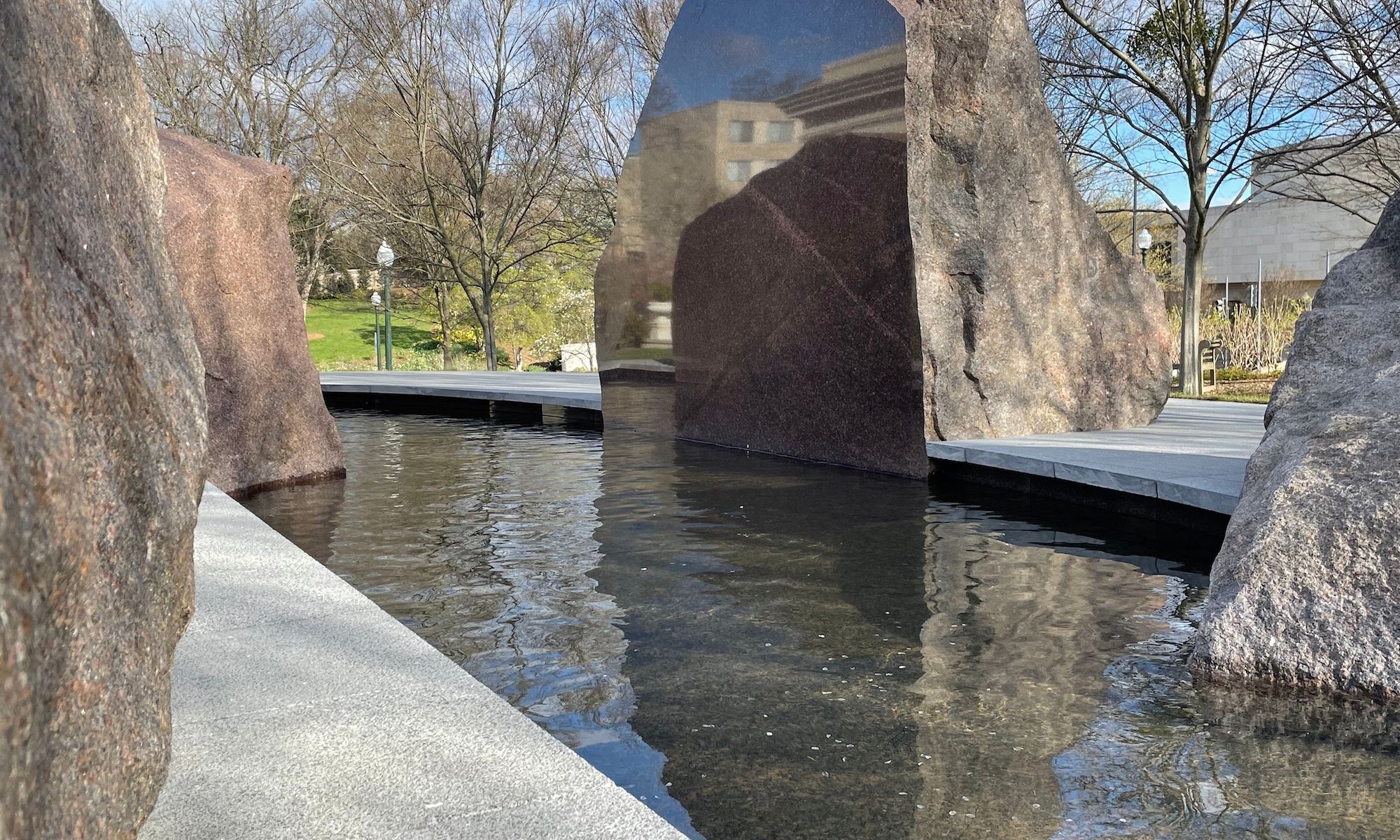Elyn Zimmerman, Sudama (2023), American University, Washington, DC Photo ©Nord Wennerstrom, courtesy The Cultural Landscape Foundation
A large-scale installation by the sculptor Elyn Zimmerman that had previously been slated for demolition formally reopened today (4 April) with a new name and design on the campus of American University in Washington, DC.
The newly reconfigured work, titled Sudama (2023), was originally constructed in 1984 as a site-specific work for the National Geographic Society under the name Marabar (1984), but came under threat of demolition in 2017 when the National Geographic Society notified Zimmerman that it planned to dismantle the work as part of a campus redesign. Sudama’s relocation and redesign comes after a protracted preservation campaign, spearheaded by the non-profit Cultural Landscape Foundation, which saw the work become the subject of numerous legal and curatorial debates.
In March 2020, after learning of the National Geographic Society’s plans to demolish Marabar, the foundation mounted a wide-ranging publicity effort focused on building support for the artwork, which was Zimmerman’s first public sculpture and a relatively rare example of Land Art in the eastern United States. The foundation’s campaign included letters of support from art world figures such as the Whitney Museum’s director Adam Weinberg, who stated that Marabar’s demolition would be “akin to the destruction of an irreplaceable ecological or cultural heritage site” and noted the relative rarity of Zimmerman’s work as a woman in the male-dominated Land Art tradition.
Elyn Zimmerman, Sudama (2023), American University, Washington, DC Photo ©Nord Wennerstrom, courtesy The Cultural Landscape Foundation
In addition to garnering public support, the foundation petitioned local historic preservation boards in order to combat the planned renovation, arguing that even relocating a site-specific work like Marabar was tantamount to destroying it. The foundation’s arguments called attention to the broader lack of definitions and protections afforded to site-specific public art.
In March 2021, the District of Columbia’s Historic Preservation Review Board rejected the foundation's arguments and reaffirmed its 2019 decision approving the National Geographic Society’s planned renovations, stating that the 1984 installation did not meet the criteria to be considered for historic preservation.
Following that decision, the National Geographic Society agreed to pay for the relocation and rebuilding of Marabar to a site of Zimmerman’s choosing. After selecting the American University campus, Zimmerman changed some of the installation’s design aspects to reflect the new location. These changes included a new, crescent-shaped reflecting pool, as well as a new configuration of the large, 450,000-pound polished boulders that make up the core of Marabar’s structure. After these changes, Zimmerman felt that a new name was needed.
Elyn Zimmerman, Sudama (2023), American University, Washington, DC Photo ©Nord Wennerstrom, courtesy The Cultural Landscape Foundation
“The title Marabar was inspired by the description in EM Forster’s book A Passageto India of one of the many caves in India that were carved 3,000 years ago out of natural solid rock,” Zimmerman explained in an interview with the foundation. “His book describes one cave in particular—Sudama. It’s entered through a rectangular passageway that leads to a high, long, barrel-vaulted space with ‘mirror’ polished walls and arched ceiling. The polish is to support the extraordinary acoustics experienced in the space that was used for centuries by religious devotees for meditation and chanting.”
A similar debate about reconfiguring an outdoor art space has unfolded concurrently elsewhere in Washington, as the Smithsonian’s Hirshhorn Museum and Sculpture Park has pushed for a revamp of its sculpture park, which like the museum building was designed by Brutalist architect Gordon Bunshaft. In 2019, the Hirshhorn selected artist Hiroshi Sugimoto to redesign the park, sparking a dispute with preservationists and other groups, including the education and advocacy organisation Cultural Landscape Foundation.
In the Hirshhorn sculpture park debate, the decision ultimately fell to the National Capital Planning Commission, which approved Sugimoto’s design in late 2021. Last November, US First Lady Jill Biden presided over a groundbreaking ceremony for the park’s renovation.

